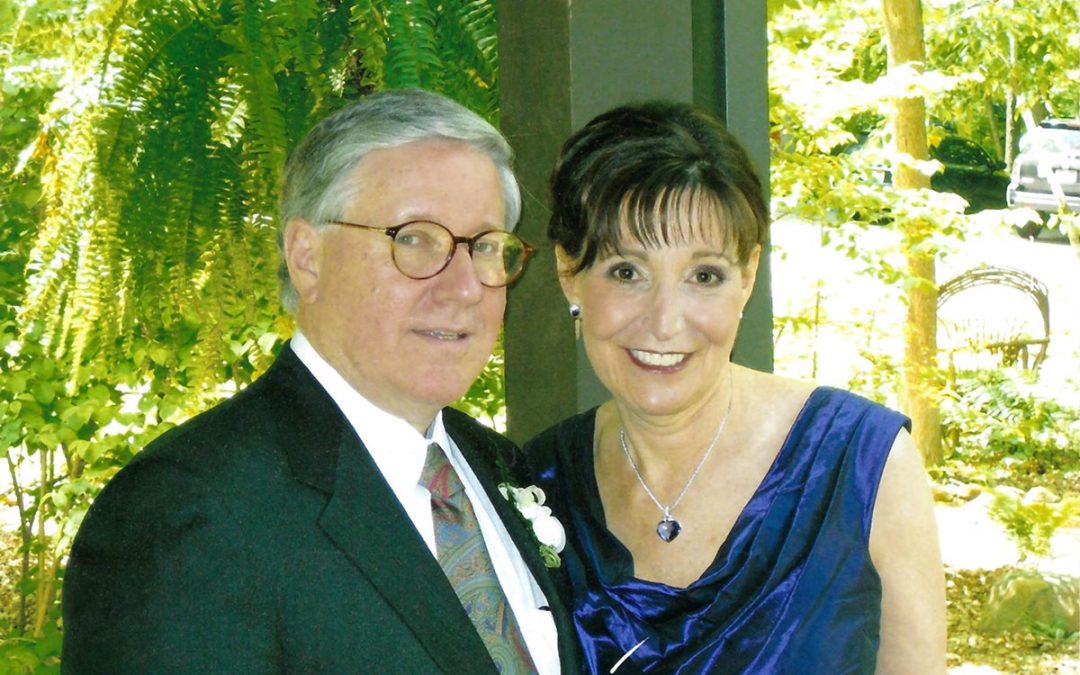This year, my husband, Bob and I continued our tradition of spending New Year’s Eve at the Inn at Honey Run, a small, tranquil retreat in the heart of Amish Country in Millersburg, Ohio. We have been coming here yearly since we were married here in 2008.
This year was different, however. This December we recreated our wedding ceremony and reaffirmed to each other that we are, indeed, “on the right path.” Let me explain.
Our wedding ceremony was structured around the idea of a labyrinth. As opposed to a maze, which is meant to trick you with twists, turns, dead ends, branches and choices, a labyrinth consists of a single, circular winding path from the edge to the center. The way in is the way out. A labyrinth is not designed with difficulty of navigation as a goal. With a labyrinth, there is one choice to be made. And that choice is to enter, or not.
But our ceremonial labyrinth differed from a traditional labyrinth. Instead of having just one way in/out, ours had two side-by-side pathways in. Each path led simultaneously to the center where our ceremony took place. Once the ceremony was completed, we exited the labyrinth, hand in hand through a new, wider path that belonged to both of us and that we had created together. The path marked the beginning of our new journey. For us, the double labyrinth was a physical representation of the model that we felt successful relationships between two people might take: while we would each retain our own identity, we are also a team, hand in hand.
Walking Hand in Hand
It wasn’t until this past New Year’s Eve, standing in the exact spot where our wedding took place nearly twelve years ago, that I realized how much our work here at the Ohio Council for Cognitive Health is inspired by some of the same principles as the labyrinth. I suddenly made the connection: when we are dementia care partners, we retain our individual identities, but by necessity, we are also involved in a team. We’ve made a commitment to be “in it” together – through twists and turns, circles and pauses, good times and not-so-good times.
I think our evolving program, Hand in Hand at Home, provides a great example of this path.
We have an approach with which we acknowledge that being on the “right path” doesn’t mean everything we try will work every time. It means understanding the need to recalibrate as care needs and abilities change. It means finding a response or action that is “just right” for each new situation. Rather than questioning ourselves or feeling self-doubt, we might instead try to find ways to maximize effectiveness with the tools we have—to work as a team of care partners–human care partners, not perfect care partners.
Finding the Right Path
Our experience “re-walking the labyrinth” and our subsequent discussion of what it means to walk together caused me to think about ways that we can be most supportive of care partnering relationships. In any relationship, our behaviors influence those around us. In fact, one of the most common phrases I use at home with both Bob and our grandkids is “What did I do or say to cause you to react this way? What could I have done differently?”
Why would it be any different with those impacted by dementia?
Here’s the problem though – people with dementia are often unable to express their opinions about how we could have done something differently or better.
On our website, we have a section called Understanding Responsive Behaviors, which explains that behaviors are actually ways of communicating. We call them responsive behaviors because they usually occur when the person has a need that is not being met, and is unable or does not know how to express this in words. They are responding to a lack of something, or something they do not like nor want, such as pain, too much stimulation or a feeling such as anxiety or fear.
Our blog on this topic introduces our approach to responsive behaviors. We’ve found that the best way to prevent responsive behaviors is to help the person engage in a meaningful activity. Most behaviors are a communication of a need to be active, safe, useful or engaged.
Prevention of uncomfortable circumstances or situations can be a goal, but such prevention is not always possible. Like walking the labyrinth, interpersonal interactions, and life itself, our response to difficult situations is what often reinforces that we are “on the right path.” Through emotional connection and solving difficult situations together, we can feel closer to someone. We are constantly learning this lesson as dementia care partners.
As you read more about our work here at the Ohio Council for Cognitive Health and our strategies for addressing responsive behaviors, I hope you will agree that we are on the right path, walking hand in hand, through good times and bad. Thank you for “choosing to enter” and joining us on this journey as we partner to bring meaning, purpose, and joy to those impacted by dementia.

